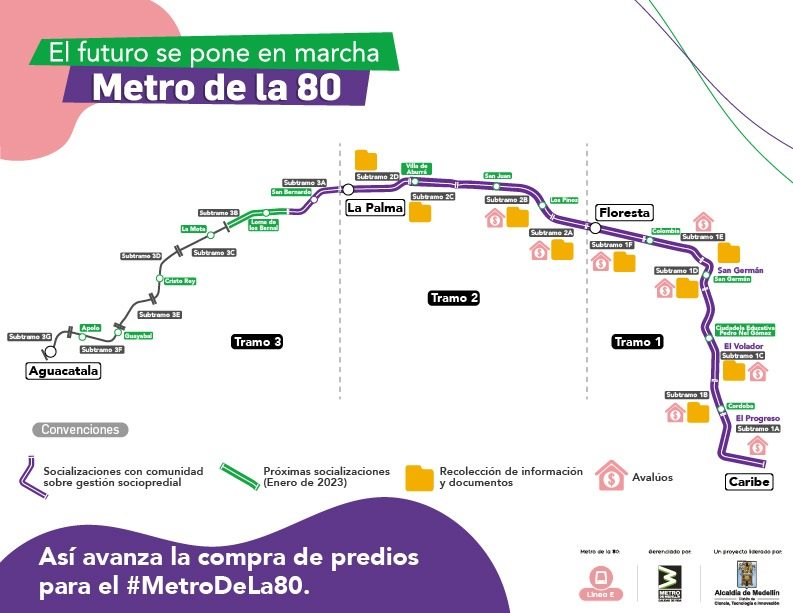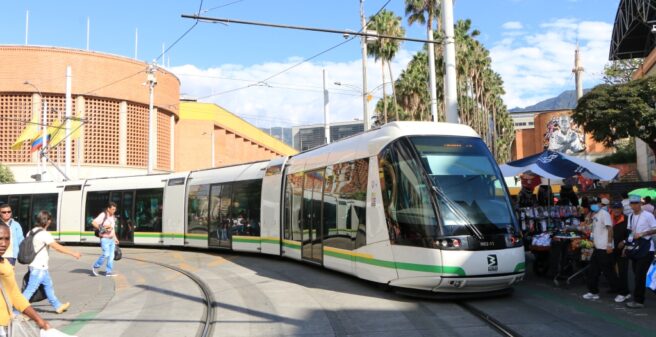
While in the capital city Bogotá construction of a metro system has been planned for decades and has now finally begun, the second largest city in the country – Medellín – has already been offering electric local transport on rails for more than two decades.
Situation today
Medellín‘s metro network consists of a total of 34.5 km track, which runs on surface and in the inner city centre as an elevated train. On the outer section Metro Medellín uses in part former narrow gauge train routes which had been abandonded many years before, and it is completely fenced in, without crossings and physically segregated from any roads. The routing in part reminds more of European suburban railways (S-Bahn) more than a pure metro.
Two lines A and B are serving a total of 27 stops. Here, 42 MAN/Siemens three-car trainsets from the 1990s, which have been modernised in recent years, and 38 newer units from CAF (built 2009-2016) are in daily operation. The metro runs on 1,435mm gauge and with catenary under 1,500 V DC. Siemens Mobility has completely modernised the Metro’s signalling technology since 2018.
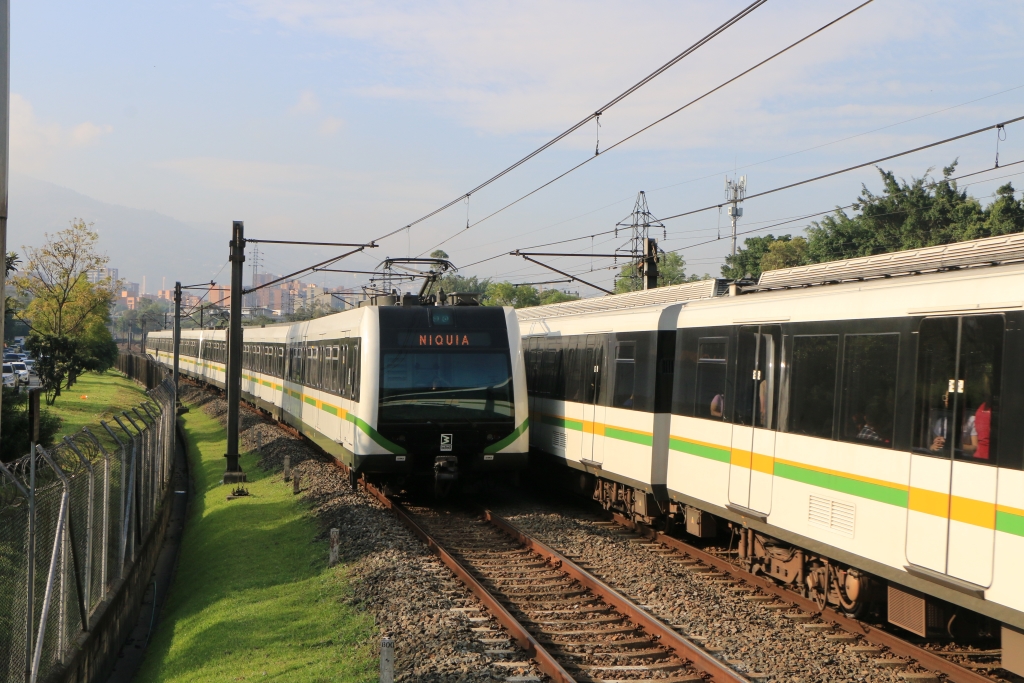
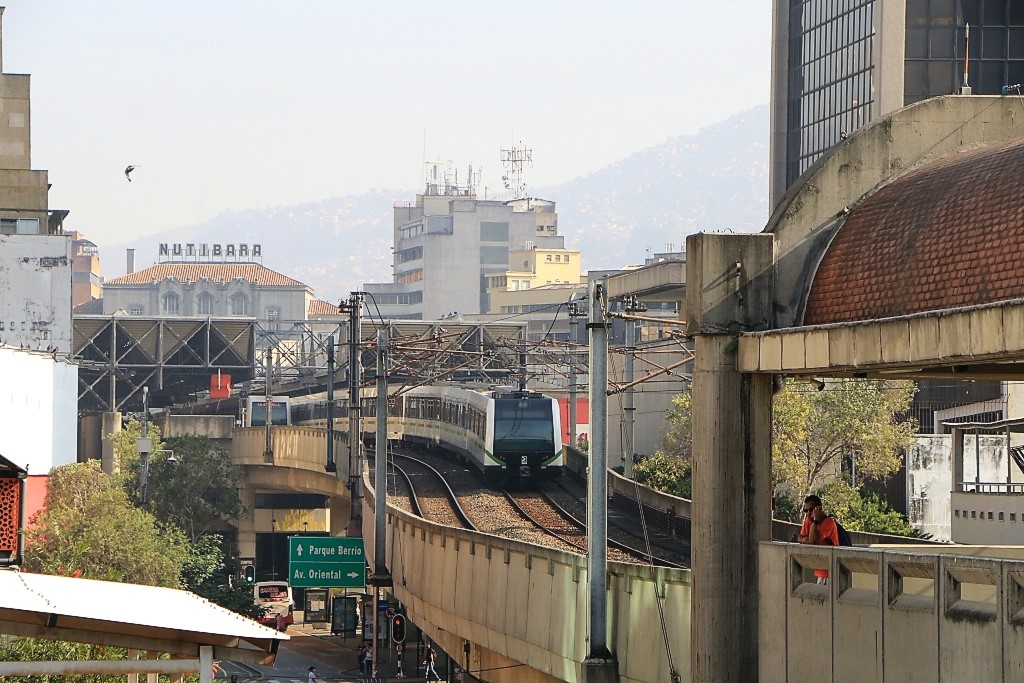
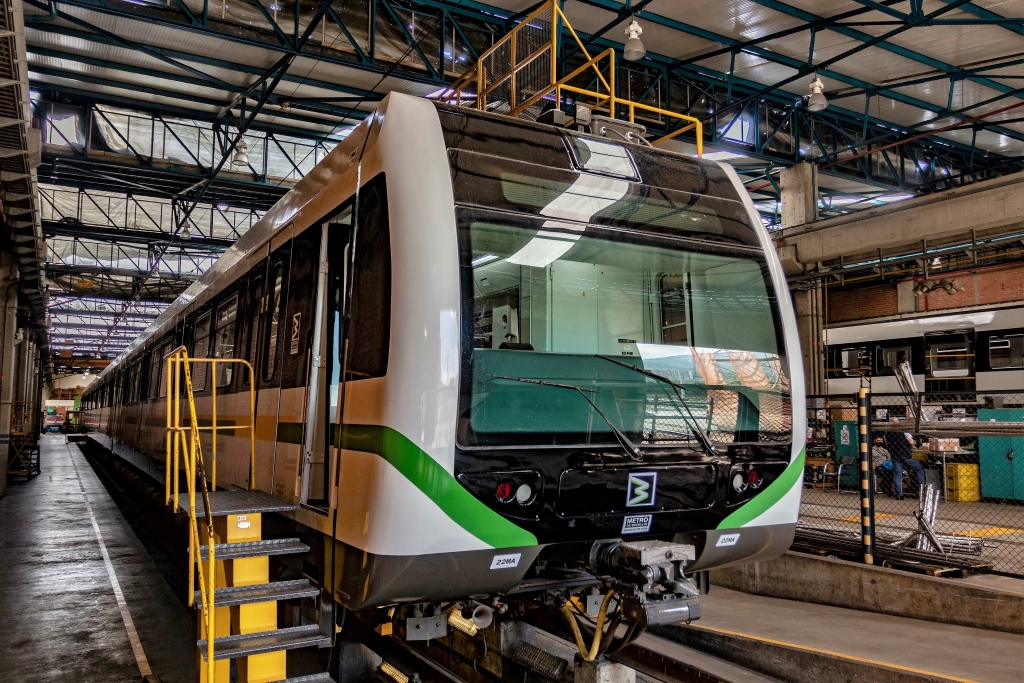
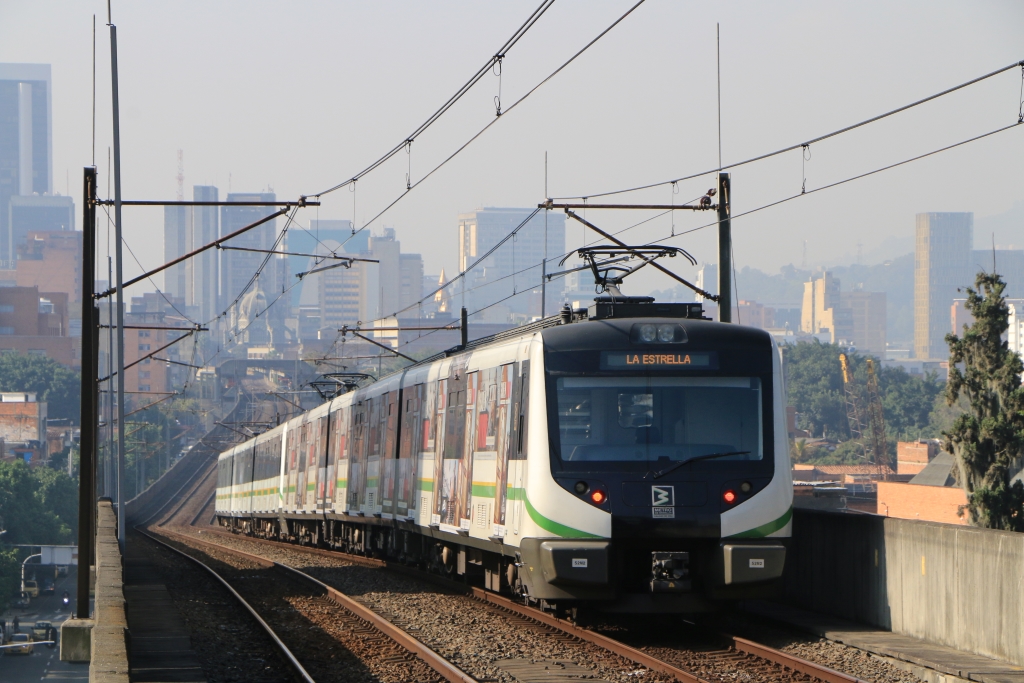
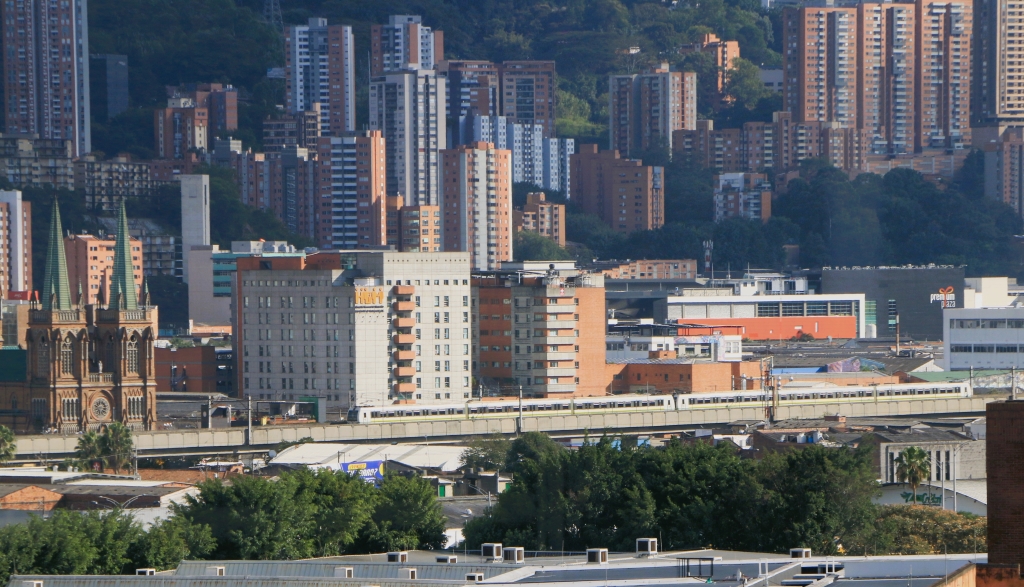
Translohr – “Tranvía Ayacucho”
In order to avoid the high costs of metro construction and at the same time to allow a much better integration into the city’s landscape without the massive station buildings and elevated tracks on bridges development, America’s only Translohr line was built a few years ago. It begins at ground level directly under the San Antonio interchange station of the two metro lines A and B and runs over a length of 4.3 km on its own marked route along existing roads. Some of these streets have been designated as pedestrian zones and are thus practically free of car traffic. 12 five-section Translohr trainsets with track guidance via a single central rail have been in use here since 2016 – branded as “Tranvía”. line T.
Picture gallery
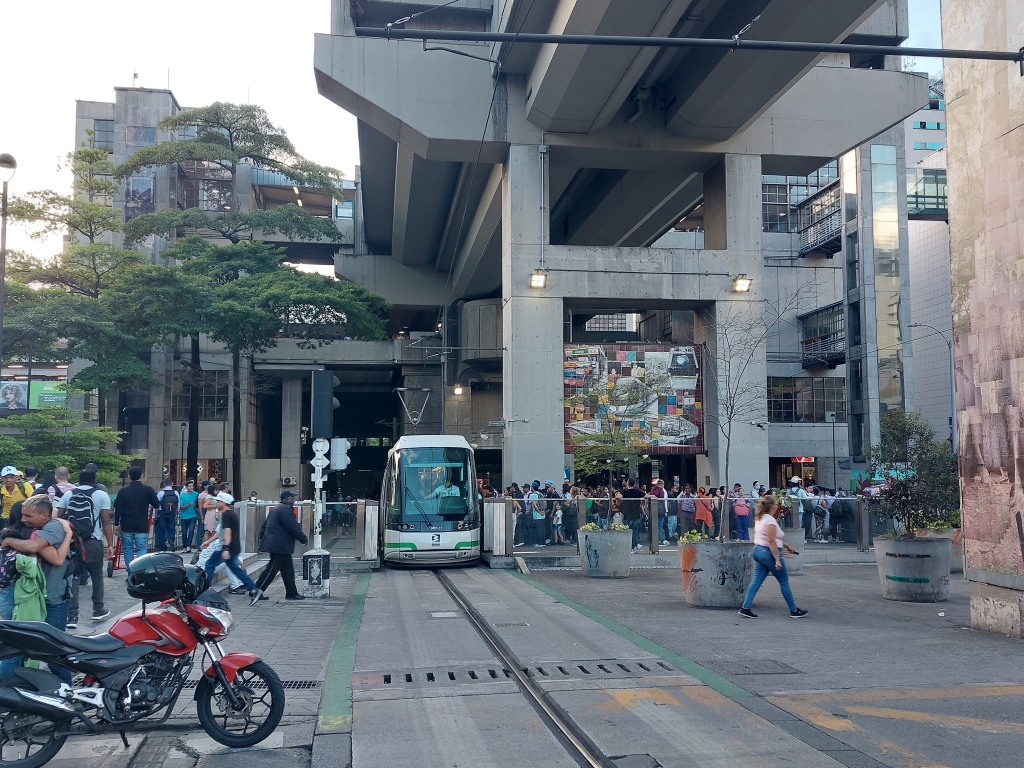
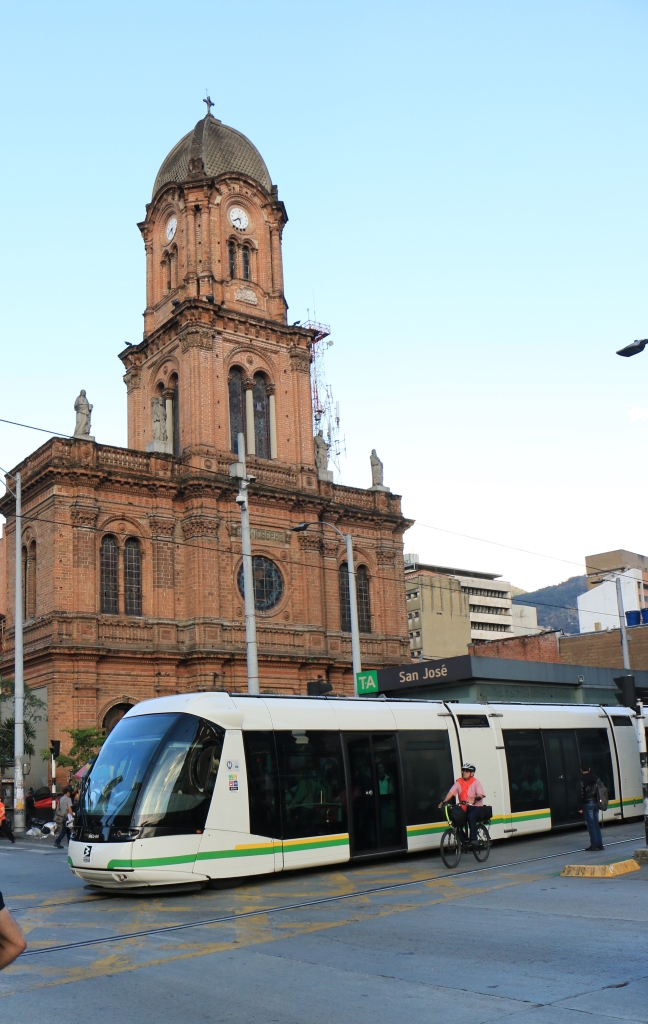
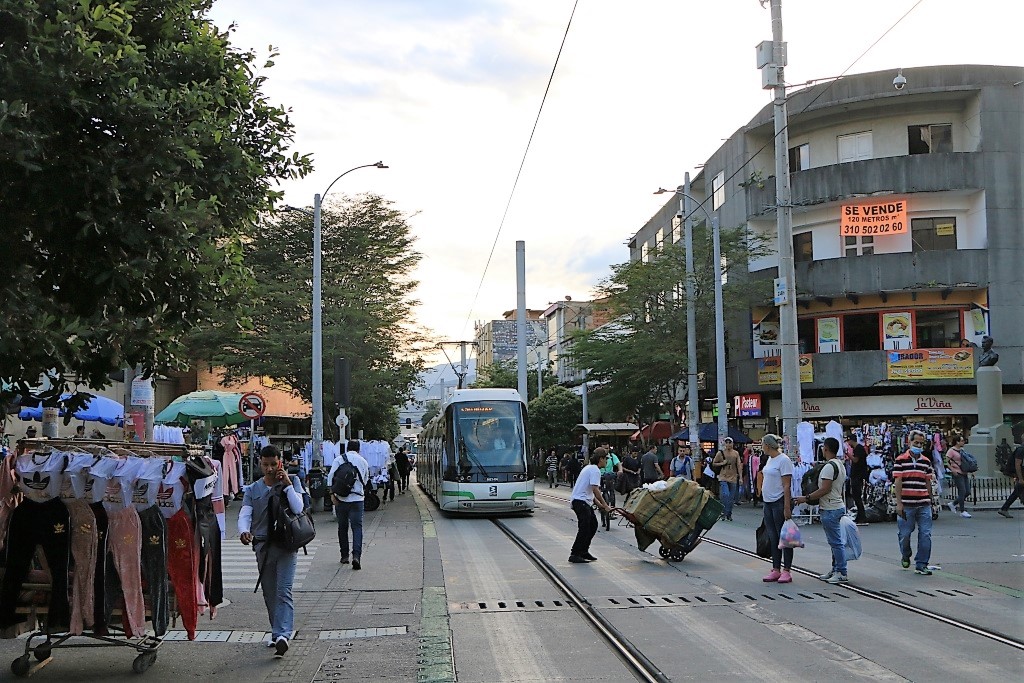
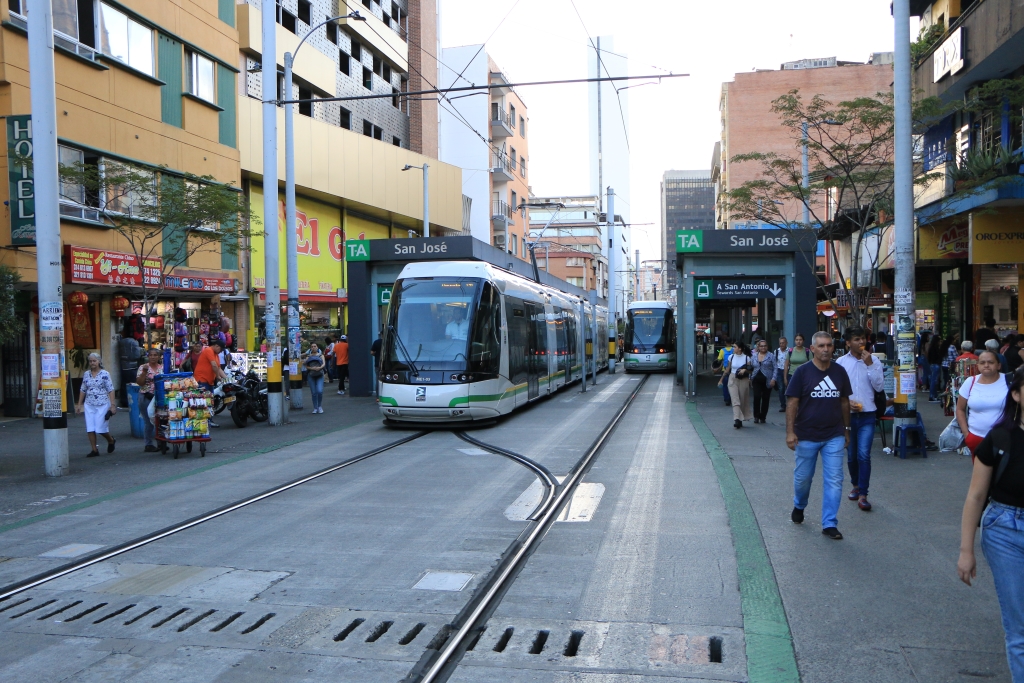
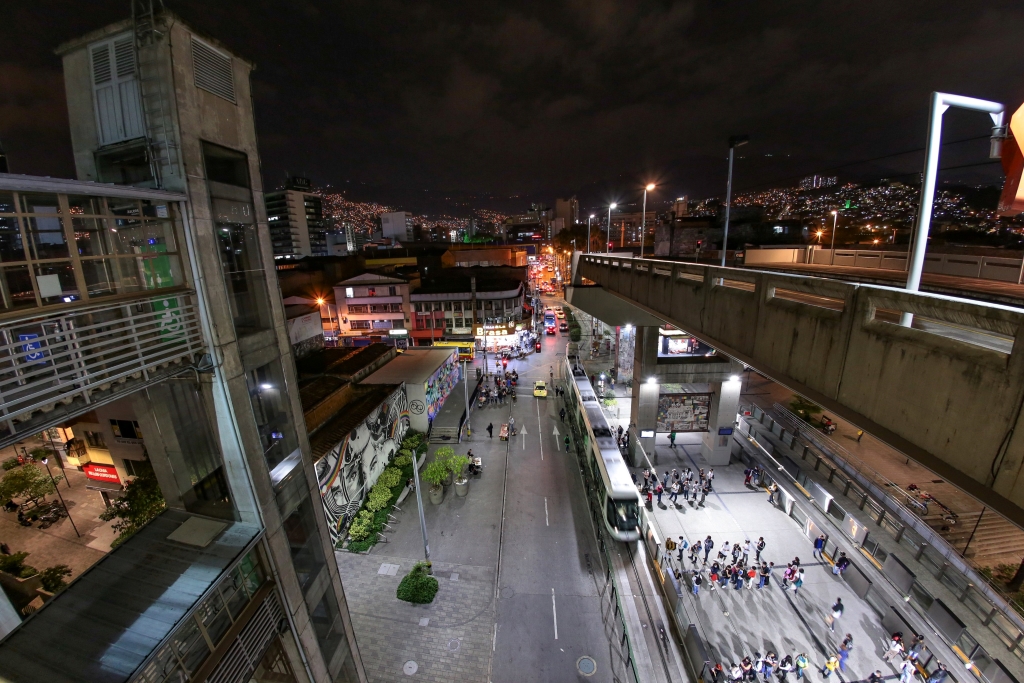
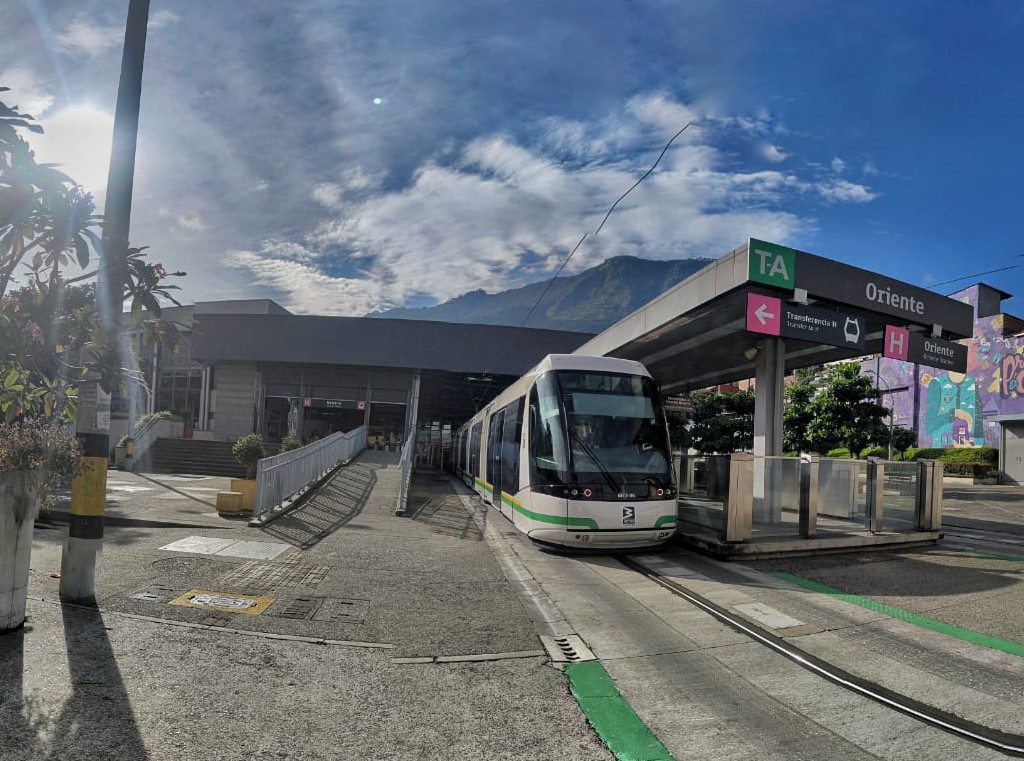
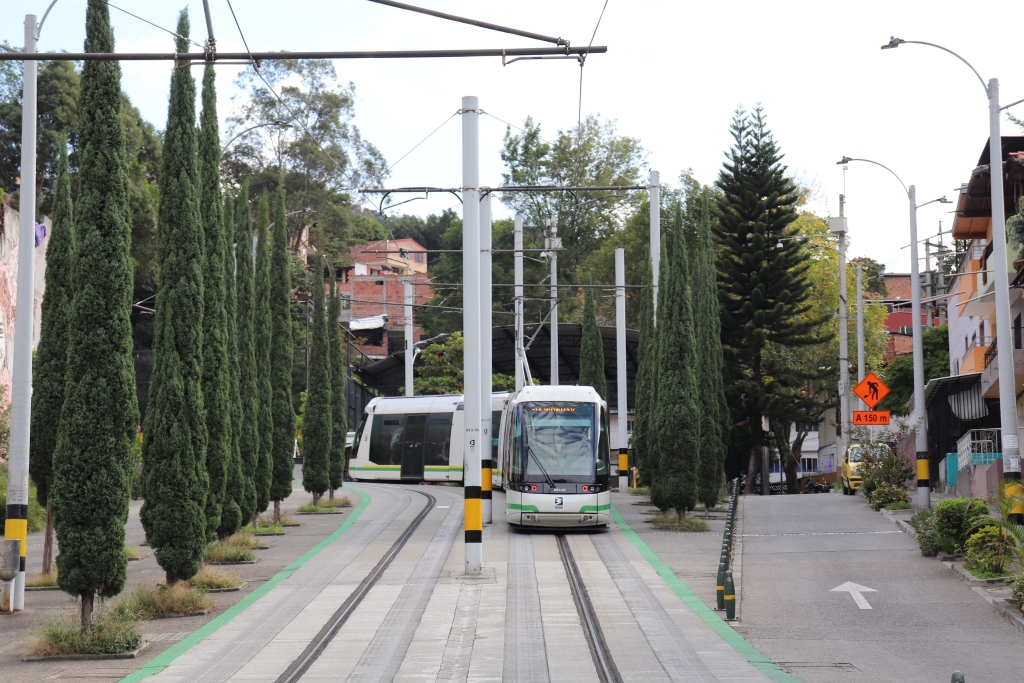

Another network scheme is available here: https://www.urbanrail.net/am/mede/medellin.htm.

The varied public transport offer also includes six different cable rope lines called “Metrocable”, especially for accessing higher located city districts – a system that has found successful successors elsewhere. Since 2011, there have also been so-called metro bus lines (by 2023 there are three of them in operation), which are now exclusively operated by e-buses. However, these do not have their own right-of-way alignment on the entire routes and therefore have to share the streets with the overflowing individual traffic, which frequently lead to delays, at least during rush hours. The 12-metre buses mainly used on routes O and 2, also cause frequent overcrowding. But also the two rail-based systems, the metro and the Tranvía, have long since exceeded their capacity limits at certain times of the day; passengers often have to let several trains pass until they can enter the vehicles.

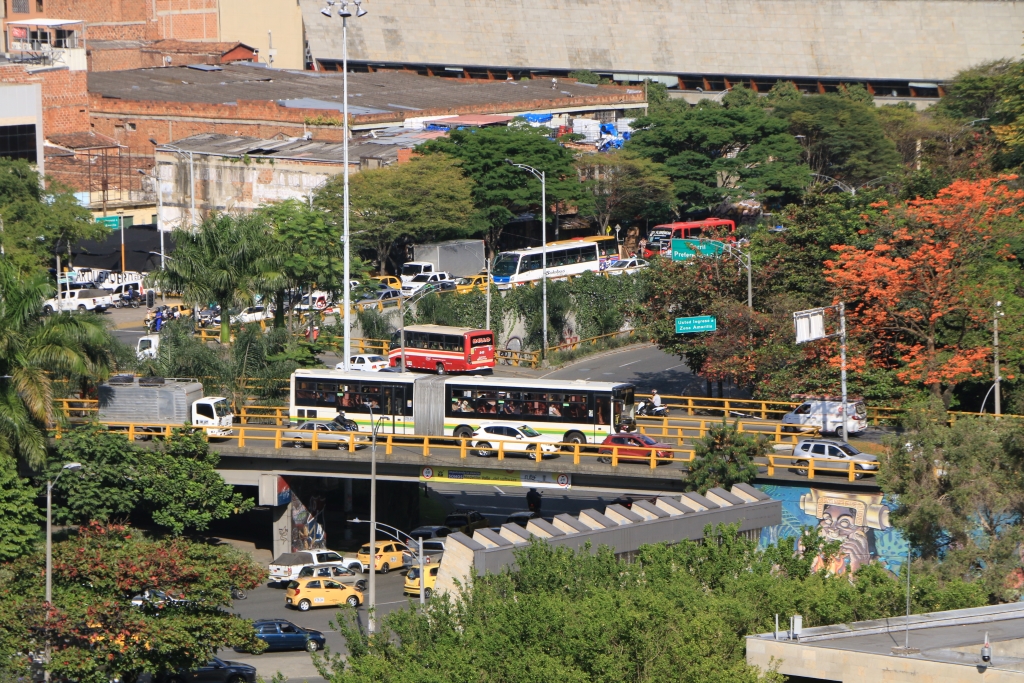
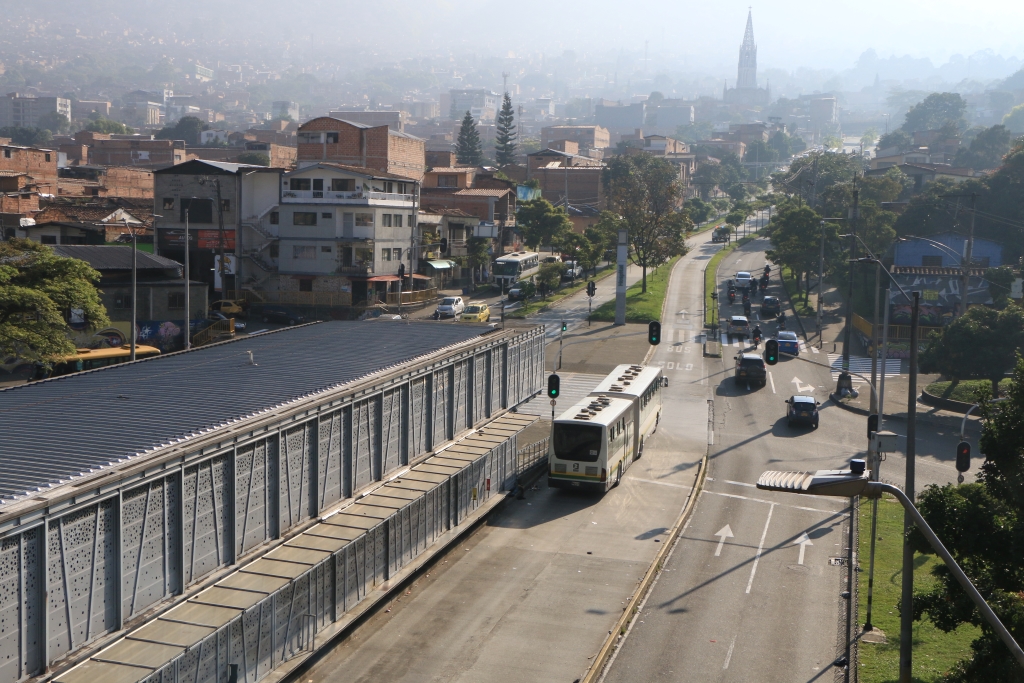
A “real” tram will be built
The expansion of public transport ranks high on the city council’s agenda. A few extensions of the metro are planned, but based on cost considerations compared to the metro construction, Medellín’s initial plans included an extension of the “Tranvía”. However, the Translohr system is no longer been offered by the manufacturer Alstom since 2018, and after lengthy studies and debates, the local administration decided in favor of the construction of a traditional low-floor steel-wheel tram. The winner of the tender for the construction of the first such line is a Chinese-Portuguese consortium composed of the China Railway Construction Company (CRCC) and Portuguese civil-works specialit Mota-Engil together with its Colombian branch.
A 13.3 km standard-gauge line with 17 stops will be built along the Avenida 80, which will offer interchange with the metro lines A and B at three stops: Aguacatala (line A), Floresta (B) and Caribe (A). Construction is scheduled to begin in 2023, the inauguration is planned for 2027. Similar to the Translohr line, the new tram will also mostly use its own alignment along or in the middle of existing roads and will be based on similar operationals elsewhere. Vehicle procurement has not yet been determined.
The project, called “Metro de la 80”, will be financed 30% by the city and the region of Antioquía, while the central government will tax the remaining 70% of the expected costs of about USD 760 million.

